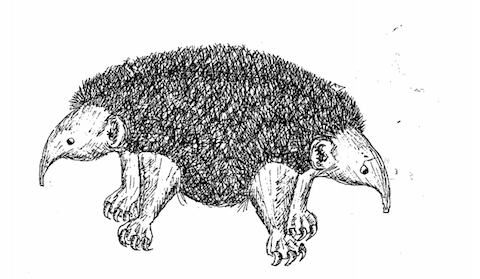
Ten years in academia gave me a healthy dislike of clichéd jargon, as well as an appreciation for jokes about it. There are a few, like the academic sentence generator and Ph.D. Comics, that capture a bit of what it’s like to go to school and work in higher ed. Corporate drones, of course, have Office Space and Dilbert. But what about the spooks, those nameless, faceless agents who work tirelessly away in the basement of Langley, doing who knows what to whom? Where does the C.I.A. go to laugh at its peculiar brand of hackneyed doublespeak? Not that we were supposed to know this, but perhaps many of them turn to an article called “the Bestiary of Intelligence Writing” in a 1982 copy of internal agency newsletter Studies in Intelligence.

Medium describes this odd piece as a “zoo of fictional fauna,†and like that strange literary form, the medieval European bestiary (often a source of satire and critique), this 17-page article, with footnotes, singles out the most offensive spook buzzwords as though they were cardinal sins—naming 15 members of “the Collection” in all, each one represented by its own Maurice Sendak-like pencil-drawn beast and a description of its habits. The two-headed beast at the top, Multidisciplinary Analysis, is a “hybrid—the fruit of the casual mating of standard forms of Analysis.†Just above, we have Heightened Tensions, “the adult form of Conventional Tensions—Tensions that have acquired stilts by thriving on a rich diet of poverty, malnutrition and especially alienation.†Sounds like rough work, this spy game….

Most of the beasts are cuddly enough, some mischievous, some perhaps deadly. Above, we have Dire Straits and below, Parameters. “The Agency author and artist detailed 15 monsters in all—complete with illustrations,†writes Medium, “Both of their names are redacted in the document. We’ll never know just which CIA agents turned their hand towards snarky political satire.†The document comes to us via a cache of records declassified in a lawsuit filed by former agency employee Jeffry Scudder. We do know that the two anonymous lampoonists were inspired by A Political Bestiary, book by James Kilpatrick, cartoonist Jeff MacNelly, and former senator and presidential candidate Eugene McCarthy. See the full, bone dry article here, and think about the work talk that might drive you to such creative extremes.

Related Content:
The CIA’s Style Manual & Writer’s Guide: 185 Pages of Tips for Writing Like a Spy
How the CIA Secretly Funded Abstract Expressionism During the Cold War
How the CIA Turned Doctor Zhivago into a Propaganda Weapon Against the Soviet Union
Declassified CIA Document Reveals That Ben Franklin (and His Big Ego) Put U.S. National Security at Risk
Josh Jones is a writer and musician based in Durham, NC. Follow him at @jdmagness.
The C.I.A.’s “Bestiary of Intelligence Writing” Satirizes Spook Jargon with Maurice Sendak-Style Drawings is a post from: Open Culture. Follow us on Facebook, Twitter, and Google Plus, or get our Daily Email. And don’t miss our big collections of Free Online Courses, Free Online Movies, Free eBooks, Free Audio Books, Free Foreign Language Lessons, and MOOCs.
The post The C.I.A.’s “Bestiary of Intelligence Writing” Satirizes Spook Jargon with Maurice Sendak-Style Drawings appeared first on Open Culture.
The C.I.A.’s “Bestiary of Intelligence Writing†Satirizes Spook Jargon with Maurice Sendak-Style Drawings
No comments:
Post a Comment